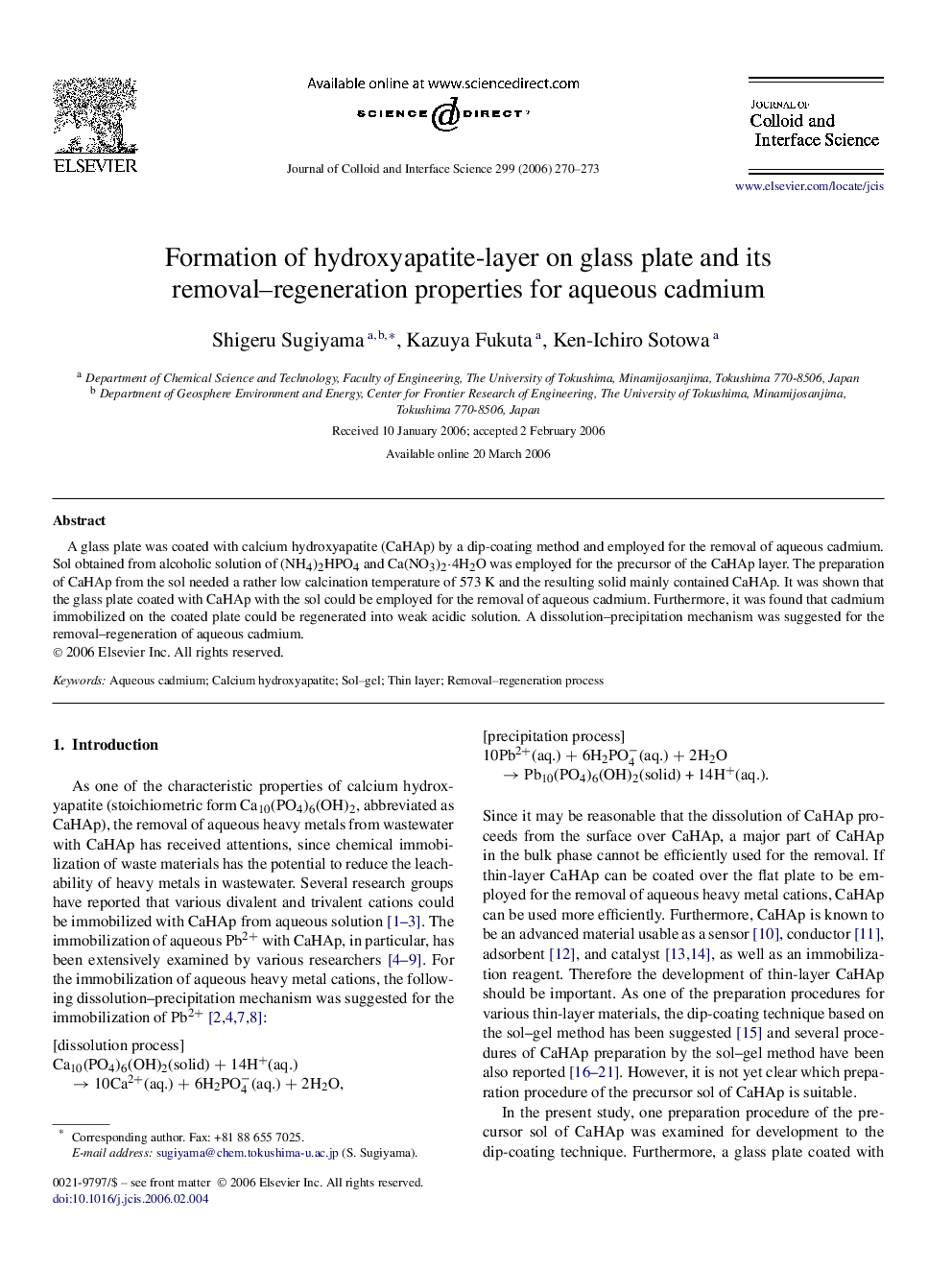| Article ID | Journal | Published Year | Pages | File Type |
|---|---|---|---|---|
| 613298 | Journal of Colloid and Interface Science | 2006 | 4 Pages |
A glass plate was coated with calcium hydroxyapatite (CaHAp) by a dip-coating method and employed for the removal of aqueous cadmium. Sol obtained from alcoholic solution of (NH4)2HPO4 and Ca(NO3)2⋅4H2O was employed for the precursor of the CaHAp layer. The preparation of CaHAp from the sol needed a rather low calcination temperature of 573 K and the resulting solid mainly contained CaHAp. It was shown that the glass plate coated with CaHAp with the sol could be employed for the removal of aqueous cadmium. Furthermore, it was found that cadmium immobilized on the coated plate could be regenerated into weak acidic solution. A dissolution–precipitation mechanism was suggested for the removal–regeneration of aqueous cadmium.
Graphical abstractRemoval–regeneration of aqueous Cd2+ with hydroxyapatite-film prepared by a sol–gel technique is reported, although it had been accepted that the regeneration of heavy metal immobilized on hydroxyapatite is essentially impossible.Figure optionsDownload full-size imageDownload as PowerPoint slide
